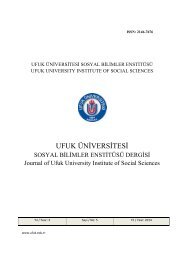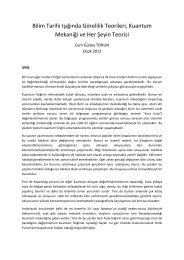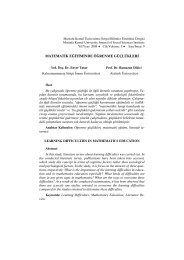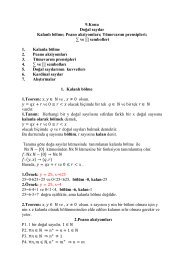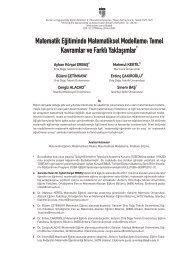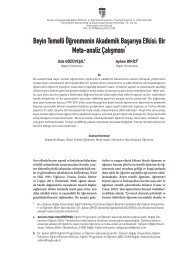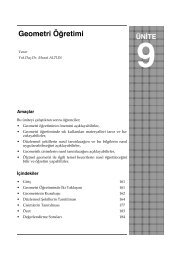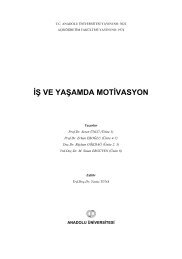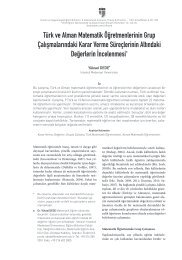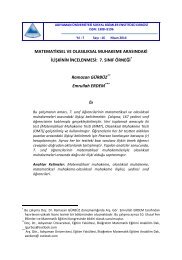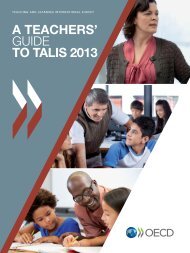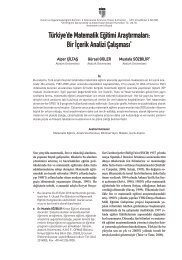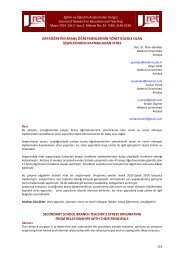NEWSLETTER
2015-12-98
2015-12-98
Create successful ePaper yourself
Turn your PDF publications into a flip-book with our unique Google optimized e-Paper software.
History<br />
[K 1 ] S. Kumar, Kac-Moody Groups, their Flag Varieties and<br />
Representation Theory, Progress in Mathematics, vol.<br />
204, Birkhäuser, 2002.<br />
[K 2 ] S. Kumar, Tensor product decomposition, Proc. of the International<br />
Congress of Mathematicians, Hyderabad (India),<br />
(2010), 1226–1261.<br />
[K 3 ] S. Kumar, A Survey of the Additive Eigenvalue Problem<br />
(with Appendix by M. Kapovich), Transformation Groups<br />
19 (2014), 1051–1148.<br />
[KuLM] S. Kumar, B. Leeb and J. J. Millson, The generalized triangle<br />
inequalities for rank 3 symmetric spaces of noncompact<br />
type, Contemp. Math. 332 (2003), 171–195.<br />
[Le] B. Lee, A Comparison of Eigencones Under Certain Diagram<br />
Automorphisms, PhD Thesis (under the supervision<br />
of S. Kumar), University of North Carolina, 2012.<br />
[Li] B.V. Lidskii, The proper values of the sum and product of<br />
symmetric matrices, Dokl. Acad. Nauk SSSR 74 (1950),<br />
769–772.<br />
[N] L. Ness, A stratification of the null cone via the moment<br />
map (with an appendix by D. Mumford), Amer. J. Math.<br />
106 (1984), 1281–1329.<br />
[RR] S. Ramanan and A. Ramanathan, Some remarks on the<br />
instability flag, Tôhoku Math. J. 36 (1984), 269–291.<br />
[R] N. Ressayre, Geometric invariant theory and the generalized<br />
eigenvalue problem, Inventiones Math. 180 (2010),<br />
389–441.<br />
[Sj]<br />
[S]<br />
[TF]<br />
[W]<br />
[Wi]<br />
[Z]<br />
R. Sjamaar, Convexity properties of the moment mapping<br />
re-examined, Adv. Math. 138 (1998), 46–91.<br />
S. Sam, Symmetric quivers, invariant theory, and saturation<br />
theorems for the classical groups, Adv. Math. 229<br />
(2012), 1104–1135.<br />
R. C. Thompson and L. Freede, On the eigenvalues of<br />
sums of Hermitian matrices, Linear Algebra Appl. 4<br />
(1971), 369–376.<br />
H. Weyl, Das asymptotische Verteilungsgesetz der Eigenwerte<br />
linearer partieller Differentialgleichungen, Math.<br />
Annalen 71 (1912), 441–479.<br />
H. Wielandt, An extremum property of sums of eigenvalues,<br />
Proc. Amer. Math. Soc. 6 (1955), 106–110.<br />
A. Zelevinsky, Littlewood-Richardson semigroups, In:<br />
“New Perspectives in Algebraic Combinatorics”, MSRI<br />
Publ. 38 (1999), Cambridge Univ. Press, Cambridge, 337–<br />
345.<br />
Shrawan Kumar [shrawan@email.unc.edu]<br />
is the John R. and Louise S. Parker Distinguished<br />
Professor at the University of<br />
North Carolina, Chapel Hill, USA. He was<br />
an invited speaker at ICM 2010. He is a<br />
Fellow of the American Mathematical Society.<br />
George Boole and andBoolean BooleanAlgebra<br />
Stanley<br />
Stanley<br />
Burris<br />
Burris<br />
(University<br />
(University<br />
of<br />
of<br />
Waterloo,<br />
Waterloo,<br />
Waterloo,<br />
Ontario,<br />
Ontario,<br />
Canada)<br />
Canada)<br />
George Boole (1815–1864) was responsible, in the years<br />
1847–1854, for initiating the revolution in the subject of logic<br />
by creating an algebra of logic for classes. This is all the more<br />
remarkable because Boole was largely self-educated in mathematics<br />
(and several languages), having had to give up attending<br />
school at the age of 16 to start his career as a schoolteacher<br />
to provide financial support for his parents and siblings. He<br />
started publishing mathematical papers, mainly on analysis,<br />
in 1841. Three years later, in 1844, at the age of 29, he won<br />
the first gold medal awarded in mathematics by the Royal Society.<br />
Boole struck up a friendly correspondence with Augustus<br />
De Morgan (1806–1871). Subsequently, De Morgan’s noisy<br />
feud (over a rather trivial matter in logic) with the respected<br />
philosopher Sir William Hamilton (1788–1856) of Edinburgh<br />
inspired Boole to write a booklet [2] in 1847 applying algebra<br />
to logic. In 1849, at the age of 34, Boole left school-teaching<br />
in Lincolnshire, England, for a professorship at Queen’s College<br />
in Cork, Ireland. For fascinating details on Boole’s life,<br />
see the excellent biography [23] by Desmond MacHale –<br />
including such remarkable details as the fact that Boole’s<br />
youngest daughter Ethel Lilian (1864–1960) wrote a novel<br />
called The Gadfly which essentially became the ‘bible of the<br />
Russian revolution’.<br />
Although Boole was primarily an algebraist and analyst,<br />
today he is best known for his work in logic, in particular<br />
for his 1854 book An Investigation of the Laws of Thought<br />
on which are founded the Mathematical Theories of Logic<br />
and Probabilities. We will refer to this book as LT. The first<br />
two-thirds of LT are on Boole’s algebra of logic for classes<br />
(which will henceforth be called “Boole’s algebra") and the<br />
last third on applications of this algebra to probability theory.<br />
This article is only concerned with the logic portion of LT.<br />
Boole’s algebra had equational laws, rules of inference for<br />
equational reasoning and a powerful Rule of 0 and 1, which<br />
has only recently been deciphered. Indeed, it is remarkable<br />
how long it has taken to properly understand Boole’s algebra<br />
– the breakthrough came in 1976 with the publication of [15]<br />
by Theodore Hailperin (1916–2014). 1<br />
1 Using Ordinary Algebra<br />
One of the distinguishing features of Boole’s algebra of logic<br />
is the extent to which it looks like ordinary algebra. Indeed,<br />
this fact is beautifully summarised in the following two<br />
quotes:<br />
That the symbolic processes of algebra, invented as tools of numerical<br />
calculation, should be competent to express every act of<br />
1 For a modern introduction to Boole’s algebra of logic, see the author’s<br />
article [7] on Boole in the online Stanford Encyclopedia of Philosophy,<br />
as well as the texts [8], [9] of two recent talks by the author on Boole’s<br />
algebra of logic.<br />
EMS Newsletter December 2015 27




